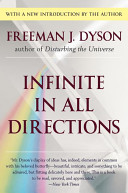The Comet Loss Cone
To understand why comet showers occur, we go back to the Oort Cloud. The theory of comet showers was worked out by Jack Hills, an American physicist now at Los Alamos. He realized that the movements of the comets in the Oort Cloud are not entirely random. Comets in the cloud are generally moving in random directions, but if a comet happens to be moving in an orbit almost exactly toward the Sun, it will not survive for long. A comet in an orbit coming close to the Sun may get boiled away and disintegrated by the Sun, or alternatively it may swing by one of the planets and pick up enough extra speed from the encounter to carry it right out of the solar system. In either case the comet is lost from the Oort Cloud. Therefore the Oort Cloud has in it a narrow empty cone called a "loss cone." The velocities in the cloud are random except that those comets with velocities inside the narrow cone are missing. The empty cone contains just those velocities which are pointed almost exactly at the Sun. And the Earth is near {28} enough to the Sun so that any comet which would come close enough to impact the Earth would have to be inside the loss cone. That is how we survive. The Earth is sitting all the time in the middle of this shower of comets, but we do not get hit because we are inside the loss cone. The loss cone is like a small umbrella shielding us from the hail of comets. Jack Hills calculated the size of the loss cone and showed that it could be effective in shielding the Earth.
But the Sun and the Oort Cloud are not sitting all alone in the universe. The Sun moves around the galaxy through a constantly shifting pattern of other stars. Occasionally another star will come close enough to the Sun to disturb the orbits of the comets in the cloud. The alien star does not need to come very close. It does not need to disturb the comets very much. It is enough if it disturbs the orbits by only a small angle, so that the narrow empty cone is shifted away from the Sun. The Sun and the Earth are then out of the loss cone. The umbrella protecting us is gone. The Earth will be exposed to the hail of comets with full intensity until the alien star has passed by and the effects of the Sun's heat and of planetary encounters create a new loss cone. It will take about a million years for the new loss cone to be established. During that million years, the Earth experiences a comet shower. After the new loss cone is in place, the Earth is protected until the next close passage of an alien star. And so the cycle continues.
Notes:
Folksonomies: astronomy astrophysics
Taxonomies:
/health and fitness/weight loss (0.532146)
/art and entertainment/music (0.424856)
/science (0.342543)
Keywords:
loss cone (0.934692 (negative:-0.032054)), Oort Cloud (0.814751 (negative:-0.449449)), new loss cone (0.627437 (negative:-0.448286)), Sun (0.555188 (negative:-0.021602)), Comet Loss Cone (0.551455 (negative:-0.538667)), comets (0.542920 (negative:-0.256810)), alien star (0.507283 (negative:-0.523996)), narrow empty cone (0.499922 (negative:-0.577400)), Jack Hills (0.470150 (negative:-0.303786)), Earth (0.457898 (negative:-0.125091)), constantly shifting pattern (0.440841 (negative:-0.573443)), narrow cone (0.439840 (negative:-0.755739)), comet showers (0.415739 (negative:-0.303786)), comet shower (0.397547 (positive:0.375521)), Los Alamos (0.393217 (negative:-0.349235)), American physicist (0.393146 (negative:-0.349235)), extra speed (0.384719 (positive:0.529700)), random directions (0.381981 (positive:0.270148)), close passage (0.376413 (neutral:0.000000)), planetary encounters (0.373599 (negative:-0.580673)), small umbrella (0.372372 (neutral:0.000000)), small angle (0.371846 (neutral:0.000000)), velocities (0.370737 (negative:-0.755739)), orbit (0.342617 (neutral:0.000000)), orbits (0.340662 (negative:-0.468025)), hail (0.339854 (negative:-0.580673)), theory (0.319659 (negative:-0.303786)), movements (0.318838 (negative:-0.407746)), case (0.317963 (negative:-0.438666)), planets (0.317557 (positive:0.529700))
Entities:
Oort Cloud:GeographicFeature (0.854785 (negative:-0.393059)), Earth:GeographicFeature (0.434029 (positive:0.038997)), Jack Hills:Person (0.263745 (negative:-0.355766)), Los Alamos:City (0.164329 (negative:-0.349235)), physicist:JobTitle (0.157896 (negative:-0.349235)), solar system:FieldTerminology (0.152530 (positive:0.529700)), million years:Quantity (0.152530 (neutral:0.000000))
Concepts:
Planet (0.971415): dbpedia | freebase | opencyc
Solar System (0.962852): dbpedia | freebase | opencyc
Sun (0.882552): dbpedia | freebase | opencyc
Jupiter (0.698692): dbpedia | freebase | opencyc | yago
Moon (0.677361): dbpedia | freebase
Comet (0.667591): dbpedia | freebase | opencyc
Milky Way (0.632441): dbpedia | freebase | opencyc | yago
Asteroid (0.622079): dbpedia | freebase | opencyc





